How to choose a home theatre system: A step-by-step buying guide
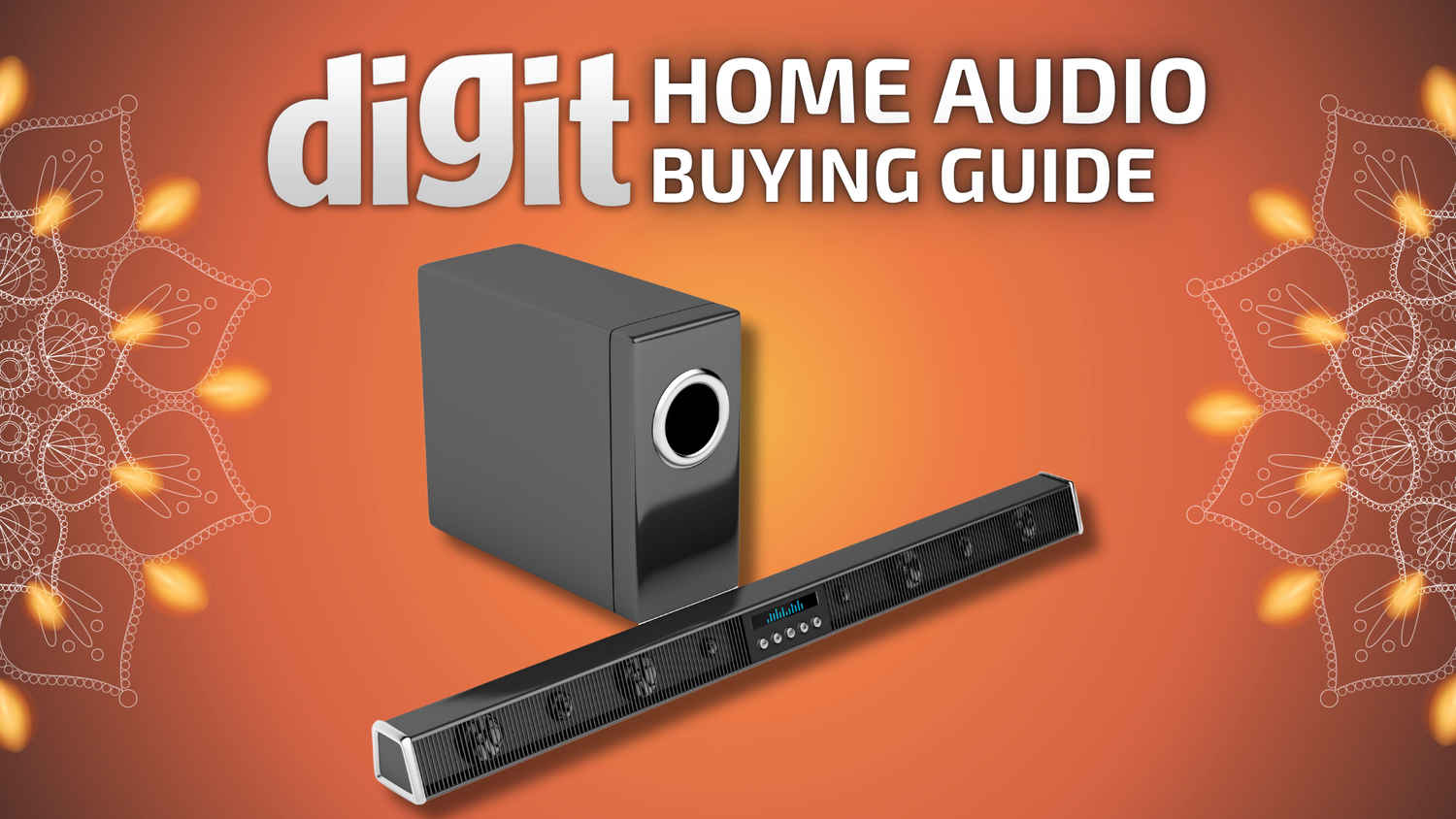
Creating a home theatre system is about crafting an immersive auditory experience that brings movies, games, and music to life. Central to this setup is your audio system. This guide will delve into the key aspects of building a home theatre audio system, from the types of audio setups available to performance considerations, and everything in between. By the end, you’ll have the knowledge you need to select the perfect system that not only meets your needs but also enhances your home entertainment experience.
 Survey
SurveyWhat are the different kinds of home theatre systems?
Soundbars
Soundbars are a popular choice for those seeking a compact and straightforward audio solution. They combine multiple speaker channels into a single, sleek unit, often including built-in subwoofers for added bass. Soundbars are ideal for smaller rooms or for those who want to avoid the complexity of multiple speakers and cables. While they don’t offer the full surround sound experience, many models come with virtual surround sound technology that simulates a multi-speaker setup.
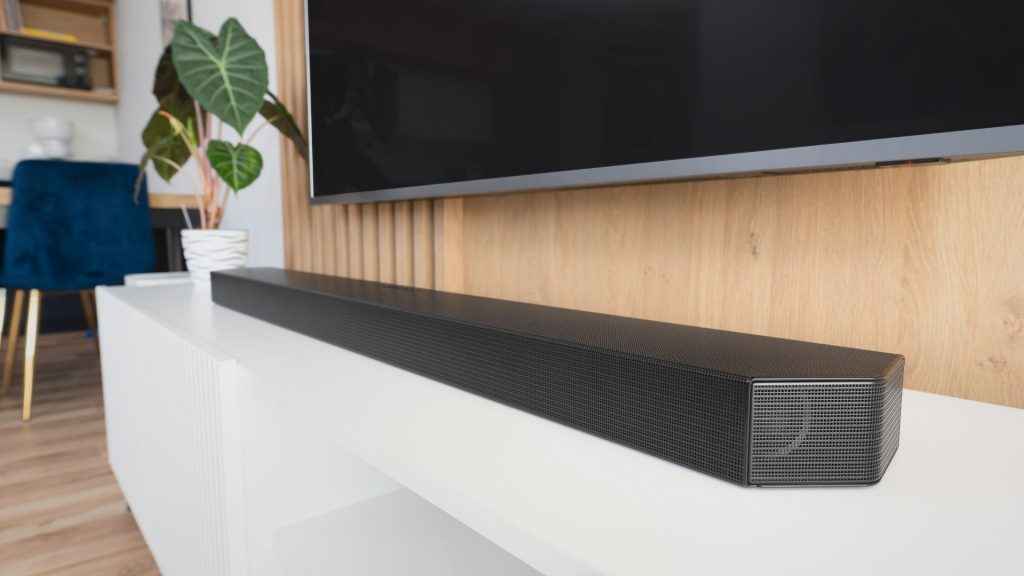
Home Theatre Speaker Systems
For those desiring a more immersive experience, traditional home theatre speaker systems are the way to go. These systems typically consist of:
- Front Left, Center, and Right Speakers: These handle most dialogue and action in a movie, with the centre speaker being crucial for clear vocal reproduction.
- Surround Speakers: Placed to the sides or behind the listening area, these speakers provide the ambient sounds and effects that immerse you in the environment.
- Subwoofer: Responsible for low-frequency effects (LFE), the subwoofer adds depth to explosions, thunder, and other bass-heavy sounds.
- Height or Atmos Speakers: For those who want to go all out, adding height speakers or Dolby Atmos-enabled speakers can create a three-dimensional soundscape, with audio coming from above as well as around you.
Wireless and Compact Speaker Systems
Wireless speaker systems have gained popularity for their ease of setup and clean, uncluttered appearance. These systems typically use Wi-Fi or Bluetooth to connect the various components, eliminating the need for long cable runs. Compact speaker systems, such as satellite speakers, offer a smaller footprint without sacrificing too much in terms of sound quality, making them ideal for rooms where space is at a premium.
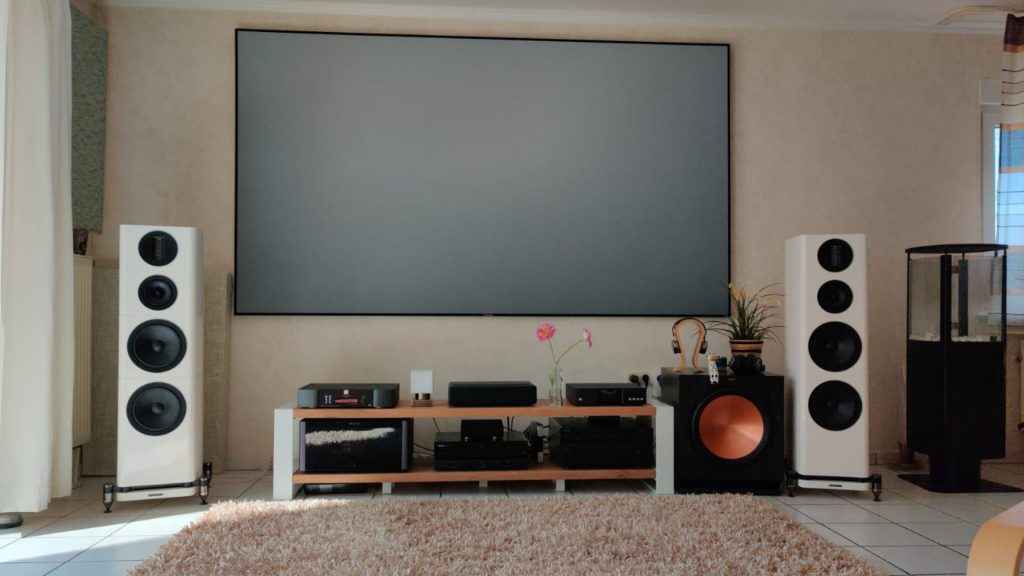
Key things to look for when buying home theatre systems
Build and Design
Material Quality and Construction
The foundation of any great audio system lies in its build quality. High-end audio components often feature robust, well-constructed enclosures made from materials like MDF (Medium-Density Fiberboard) or solid wood, which help reduce vibrations and resonance that could otherwise distort sound. The material and design of the speaker cabinets play a critical role in sound quality, ensuring that sound waves are directed accurately and efficiently.
Component Design and Layout
In a home theatre setup, the design and layout of your audio components should be meticulously planned. Speakers should be positioned strategically around the room to create an immersive sound field. For example, front speakers should be placed at ear level, angled toward the listener, while surround speakers are best positioned slightly behind the seating area. Subwoofers, responsible for delivering deep bass, can be placed in various locations, but corners often amplify bass response.
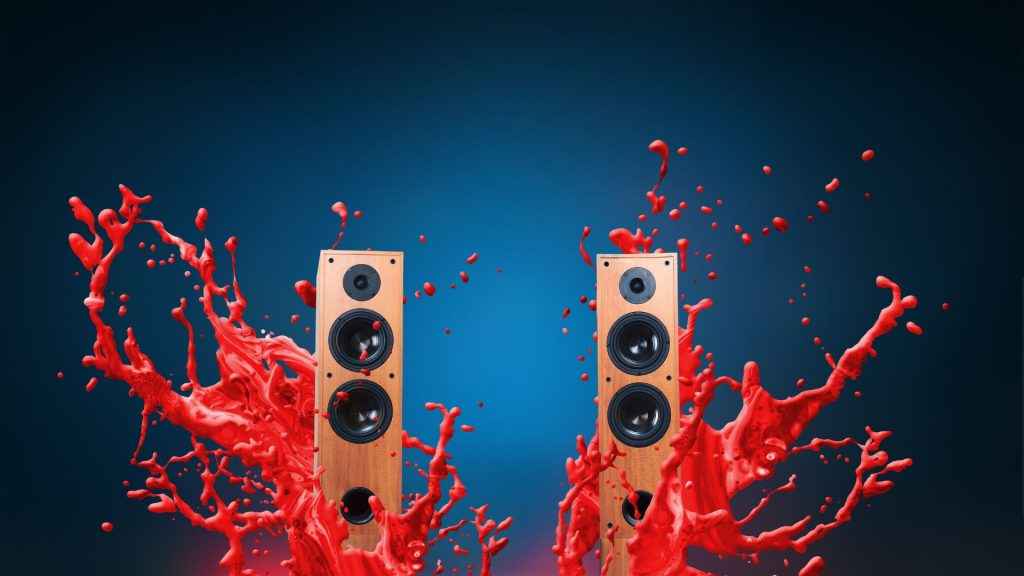
Performance
Audio Quality
Performance is where your home theatre audio system truly makes its mark. The quality of sound produced by your system is influenced by several factors:
- Speaker Sensitivity: Measured in decibels (dB), sensitivity determines how loud a speaker will play for a given amount of power. Higher sensitivity speakers are more efficient, requiring less power to produce high volumes.
- Frequency Response: A wide frequency response range ensures that your speakers can reproduce both deep bass and high treble frequencies accurately. Look for systems with a response range from at least 20Hz to 20kHz, which covers the full range of human hearing.
- Power Handling: Measured in watts, power handling indicates how much power a speaker can handle from the amplifier without distortion. Ensure your speakers are matched to your amplifier’s power output for optimal performance.
Amplification and Receiver Quality
Your AV receiver acts as the hub of your home theatre audio system, amplifying the audio signal and distributing it to your speakers. A high-quality receiver with ample power output (measured in watts per channel) ensures that your speakers can perform to their fullest potential. Additionally, receivers with support for the latest audio formats, such as Dolby Atmos and DTS, allow you to experience the latest in audio technology.
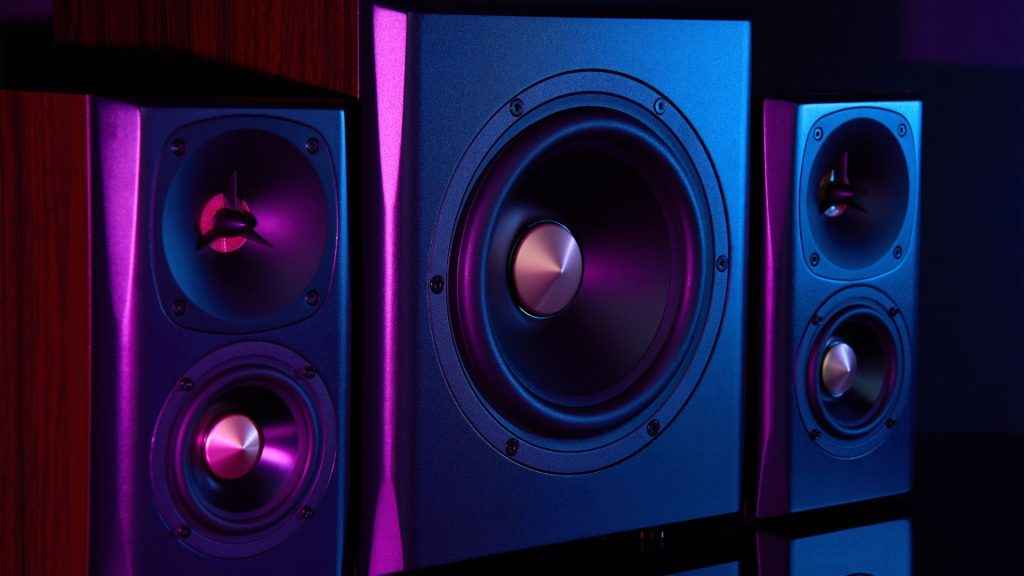
Features
Surround Sound Formats
Modern home theatre systems support various surround sound formats that enhance the listening experience. The most common formats include:
- Dolby Digital: The standard for most DVD and Blu-ray discs, providing 5.1 channels of surround sound.
- DTS: Similar to Dolby Digital but with a higher bit rate, often preferred for its clearer audio and more dynamic range.
- Dolby Atmos: An advanced format that adds height channels to create a three-dimensional sound field, making sounds appear to come from above as well as around you.
- DTS:X: A flexible, object-based audio format that adjusts to your speaker configuration, providing a personalized listening experience.
Wireless Connectivity
With the rise of smart homes, many home theatre systems now include wireless connectivity features. Bluetooth and Wi-Fi allow you to stream music directly from your smartphone, tablet, or computer without the need for additional cables. Some systems also support multi-room audio, allowing you to play music throughout your home, controlled via a smartphone app.
Calibration Tools
Many AV receivers come equipped with calibration tools that automatically adjust the audio output based on your room’s acoustics. Using a microphone, the system measures the sound from each speaker and adjusts the levels, distances, and frequency response to optimize performance. This feature is particularly useful in rooms with challenging acoustics or irregular layouts.
Expansion Scope
Upgradability
A good home theatre audio system should be flexible enough to grow with your needs. Consider systems that allow you to easily add more speakers, such as additional surrounds or height speakers for Dolby Atmos. This flexibility ensures that as new audio technologies emerge, or as your listening preferences change, your system can be adapted without needing a complete overhaul.
Compatibility with Other Devices
When selecting components, ensure that your system is compatible with your existing devices, such as gaming consoles, Blu-ray players, and streaming devices. Check for sufficient HDMI inputs and support for the latest video and audio standards, such as 4K pass-through and HDR. This ensures that your system can handle all your media sources and deliver the best possible audio and video quality.

Mounting Options
Wall and Ceiling Mounting
Mounting your speakers can greatly enhance both the aesthetics and performance of your home theatre system. Wall-mounted speakers free up floor space and can be positioned for optimal sound dispersion. Ceiling-mounted speakers, often used for height channels in Dolby Atmos setups, add an extra dimension to your audio experience. Make sure that your speakers come with or are compatible with appropriate mounting hardware.
Speaker Stands and Floor Placement
If wall or ceiling mounting isn’t feasible, speaker stands offer a flexible alternative. They allow you to position speakers at the optimal height for listening and can be easily moved to adjust the soundstage. When placing speakers on the floor, consider the impact of furniture and room layout on sound quality. For example, avoid placing speakers too close to walls or in corners, as this can cause bass frequencies to become boomy or distorted.
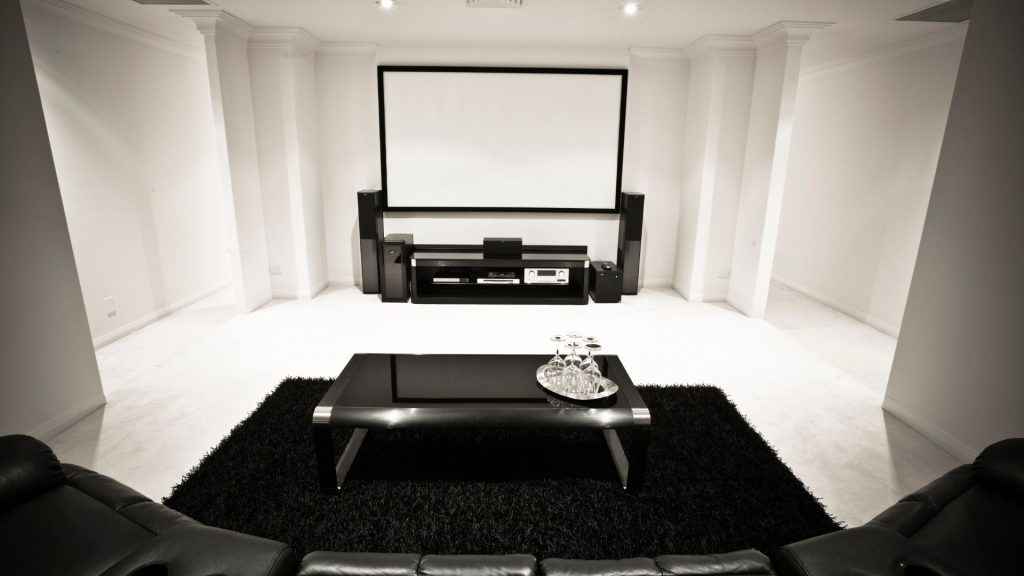
Aesthetics
Design and Finish
Your home theatre audio system should complement your room’s décor, blending seamlessly with your furniture and overall style. Many speaker manufacturers offer a variety of finishes, from sleek black and white to wood veneers that can match traditional or modern interiors. Consider how the design of your speakers, subwoofer, and receiver will integrate with your room’s aesthetic.
Concealed Wiring
A tangle of visible cables can detract from the clean, polished look of your home theatre setup. Consider in-wall wiring or cable management solutions that keep wires hidden from view. Wireless speakers can also reduce cable clutter, though they still require power cables unless they are battery-operated.
Room Layout Considerations
Your room’s layout can significantly impact the performance and appearance of your home theatre audio system. Aim to create a symmetrical setup with the primary listening position at the centre of the soundstage. Balance aesthetics with acoustics—soft furnishings like rugs and curtains can help absorb excess sound reflections, while hard surfaces may require additional acoustic treatments.
Team Digit
Team Digit is made up of some of the most experienced and geekiest technology editors in India! View Full Profile